
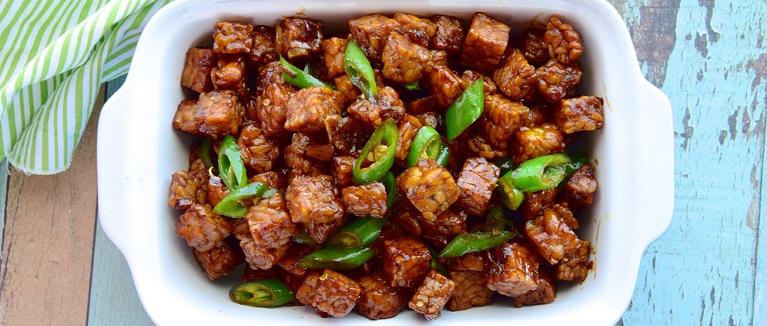
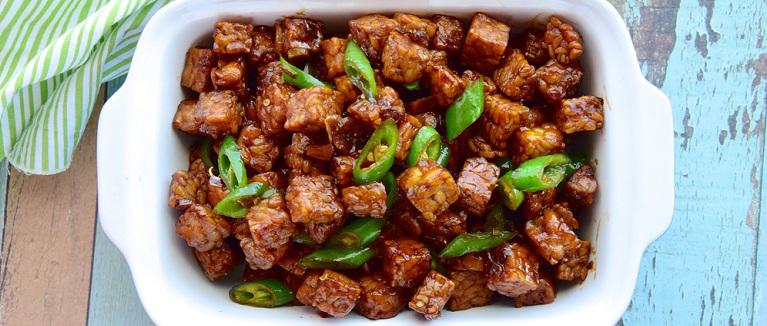
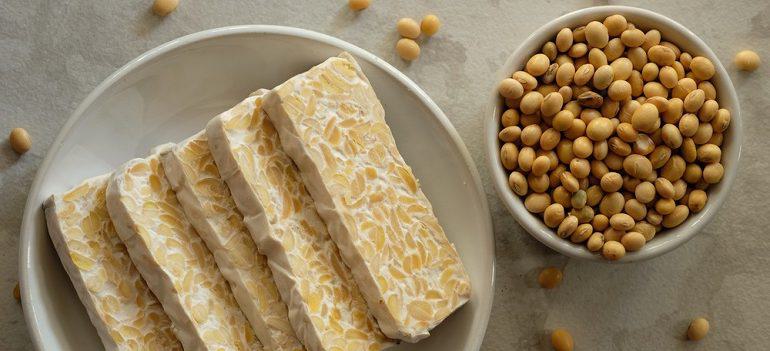 Tempeh, a popular vegan meat substitute, is made from fermented soybeans and boasts a hearty texture full of flavor.
Tempeh, a popular vegan meat substitute, is made from fermented soybeans and boasts a hearty texture full of flavor.
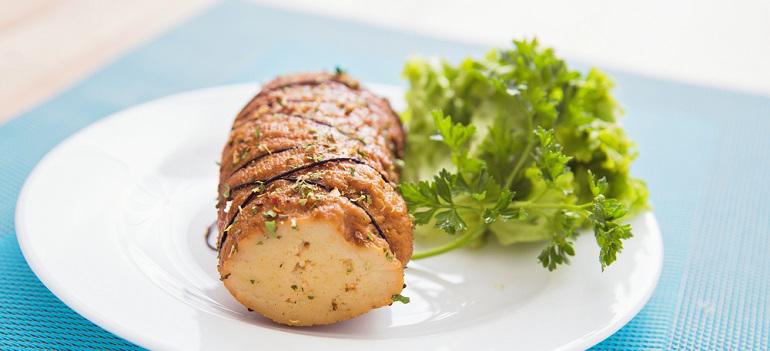 Seitan, pronounced "say-tan" is quite different from both tofu and tempeh. Instead of being made with soy, it's made from vital wheat gluten.
Seitan, pronounced "say-tan" is quite different from both tofu and tempeh. Instead of being made with soy, it's made from vital wheat gluten.
 Much like meat needs seasoning, the flavor of seitan vs. tempeh is significantly enhanced by marinating them in herbs and spice beforehand. Depending on the taste you're hoping to recreate, you'll want to combine your tempeh and seitan with a variety of sauces and flavorings.
Much like meat needs seasoning, the flavor of seitan vs. tempeh is significantly enhanced by marinating them in herbs and spice beforehand. Depending on the taste you're hoping to recreate, you'll want to combine your tempeh and seitan with a variety of sauces and flavorings.
 A Mediterranean-inspired dish, these stuffed Mediterranean Farro Stuffed Peppers are sure to be a crowd-pleaser. For a more "meaty" version of this recipe, mix a bit of flavored tempeh into the farro before serving. The nutty flavor of tempeh and tangy flavors of bell-peppers with a hint of mint make this dish an excellent side or entree when paired with a seasonal salad.
A Mediterranean-inspired dish, these stuffed Mediterranean Farro Stuffed Peppers are sure to be a crowd-pleaser. For a more "meaty" version of this recipe, mix a bit of flavored tempeh into the farro before serving. The nutty flavor of tempeh and tangy flavors of bell-peppers with a hint of mint make this dish an excellent side or entree when paired with a seasonal salad.
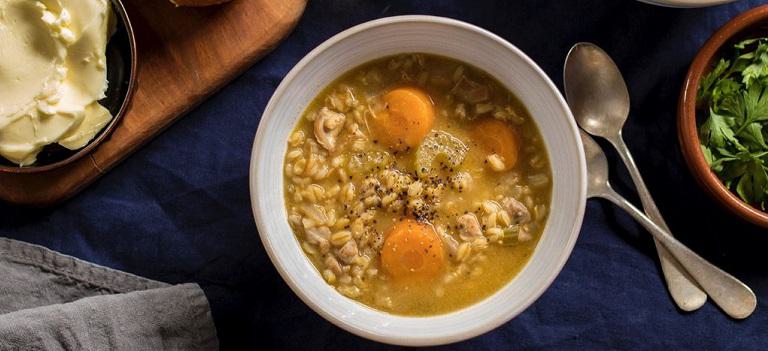 Who doesn't love a large bowl of soup? This Lemony Chicken and Barley Soup Recipe is a great way to combine all of your favorite ingredients into a single meal. And, if you're plant-based, swap the chicken out with seitan or tempeh to create a vegan meal worth writing down in your recipe book. Kids and adults alike will love filling up with this flavorful dish!
Tip: When serving vegan/vegetarian guests, remember to use vegetable broth as your soup's base instead of meat-based broths.
We hope this article has helped you better understand the differences between seitan and tempeh and when to use each. Whether you're creating a delicious plate of shepherd's pie or using one of these proteins to make plant-based meatballs for your next plate of spaghetti, using these meat alternatives is an excellent way to spice up your weekly routine. From everyone at Bob's Red Mill, we wish you the best on your plant-based journey!
Want to share more about the many ways you use these two meat alternatives? Let us know how you cook with seitan and tempeh in the comments below.
Who doesn't love a large bowl of soup? This Lemony Chicken and Barley Soup Recipe is a great way to combine all of your favorite ingredients into a single meal. And, if you're plant-based, swap the chicken out with seitan or tempeh to create a vegan meal worth writing down in your recipe book. Kids and adults alike will love filling up with this flavorful dish!
Tip: When serving vegan/vegetarian guests, remember to use vegetable broth as your soup's base instead of meat-based broths.
We hope this article has helped you better understand the differences between seitan and tempeh and when to use each. Whether you're creating a delicious plate of shepherd's pie or using one of these proteins to make plant-based meatballs for your next plate of spaghetti, using these meat alternatives is an excellent way to spice up your weekly routine. From everyone at Bob's Red Mill, we wish you the best on your plant-based journey!
Want to share more about the many ways you use these two meat alternatives? Let us know how you cook with seitan and tempeh in the comments below.